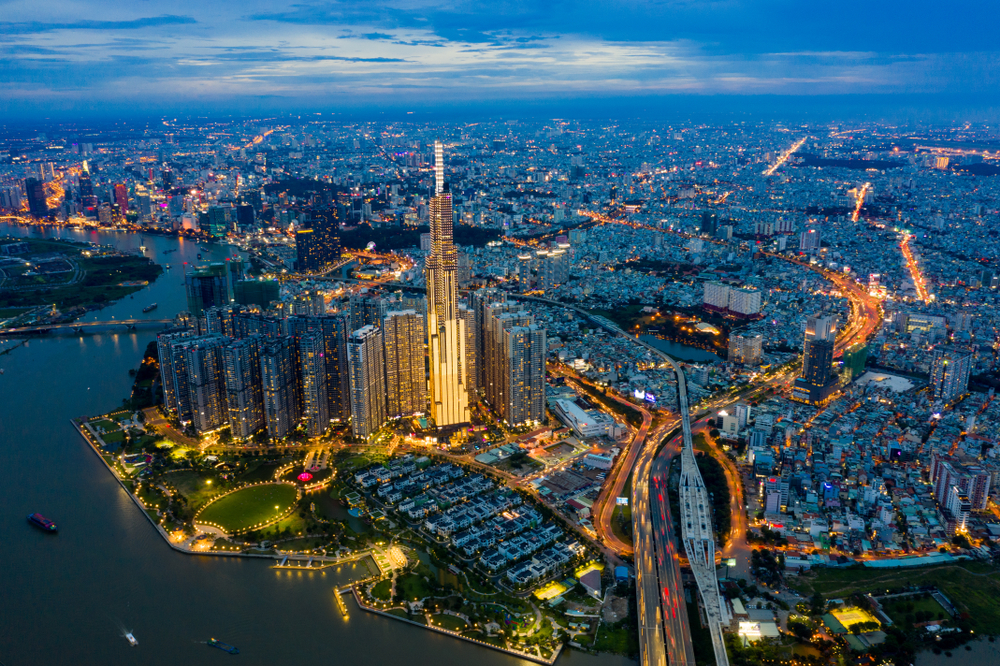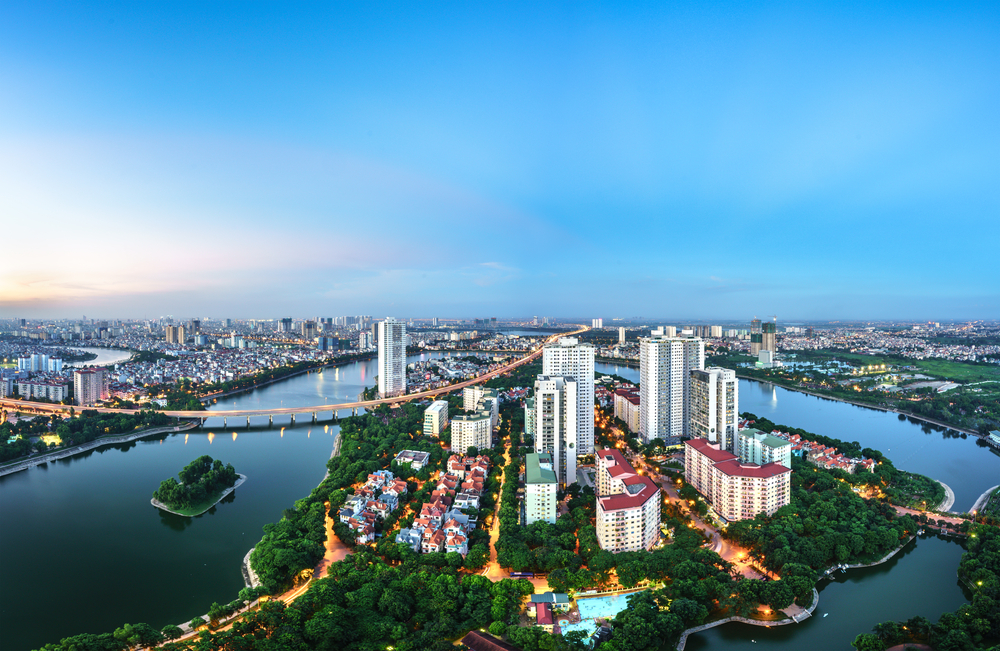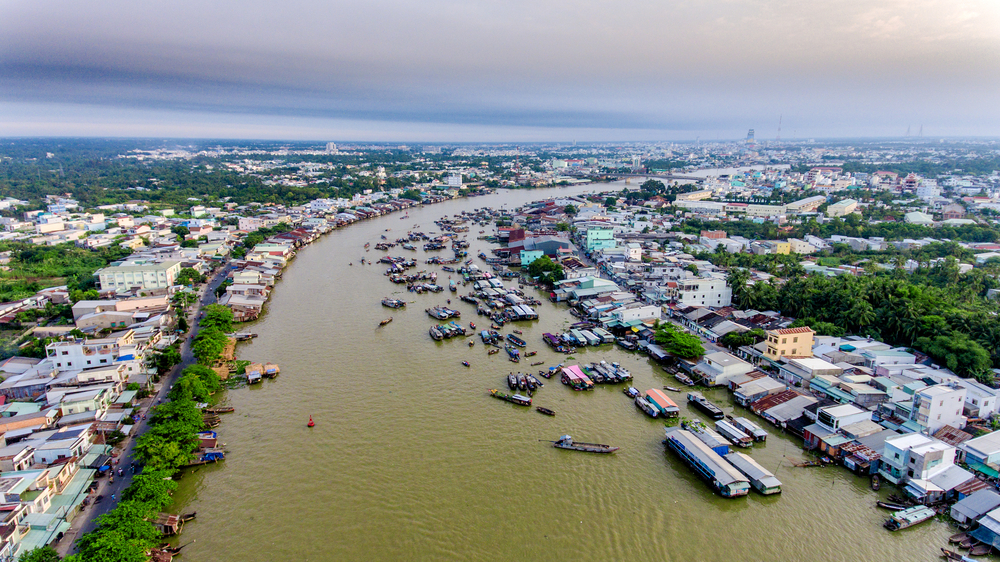Why Vietnam remains upwardly mobile, despite pandemic
Industrialisation and massive injections of FDI have propelled Vietnam into the big league of Asian nations: a fact reflected in its hyper-driven real estate market

Vietnam has plenty of pressing issues to contend with: pandemic trauma and privatisation of much of the nation’s real estate among them. Yet the country continues to meet the challenges laid in its path.
Rapid urbanisation and an expanding middle class buoyed Southeast Asia’s poster nation of industrialisation through two Covid-19 waves in 2021. As property seekers flamed for a narrow array of investment channels, residential values burned bright across the country.
“Vietnam’s residential market never really went through a cooling phase,” says Alex Crane, managing director of Knight Frank Vietnam and member of the 8th PropertyGuru Vietnam Property Awards judging panel. “A decreasing landbank and acute shortage of quality products further contributed to investor confidence, be it buy-to-rent or end-user.”
The country will likely grow its GDP this year by 6.5 percent, outperforming its ASEAN neighbours, according to the Asian Development Bank (ADB). Wallets, simply put, are “thickening” in Vietnam, says Hang Dang, managing director of CBRE Vietnam, who is also a member of the esteemed judging panel. “The rise in wealth in Vietnam, especially during the pandemic, points to the potential for further luxury and ultra-luxury products at unique, prestige locations.”
Reopened in March, the country has seen an inpouring of high-tech investment commitments, led by toymaker Lego Group’s USD1-billion plans for a carbon-neutral industrial complex in southern Vietnam. Total registered FDI had already trebled to USD8.9 billion in the first three months of 2022, with USD2.7 billion ploughed into real estate alone. Tenanted by everything from the medical equipment to furniture industries, industrial parks from north to south Vietnam saw occupancy rates rise to 79.3 percent and 87.3 percent, respectively, in the final quarter of 2021.

Vietnam is doing numbers off a year of intense pandemic measures, including a severe four-month lockdown in Ho Chi Minh City (HCMC). The subsequent decrease in landbanks severely undercut new residential supply in 2021, with HCMC bringing in 14,843 units and Hanoi, 19,439 units. The number of new condominiums in the cities, Vietnam’s largest two conurbations, was half the annual new supply from 2015 to 2019 and even lower than that of 2020.
“However, sales volumes in both cities exceeded new supply, which is an indicator of a lack of supply, rather than oversupply in the residential market,” says Hang.
More: 6 of the best spots to visit in Thu Thiem, Vietnam
Multinational corporations persisted in expanding into Vietnam even as the supply chain of industrial real estate met a wall of lockdowns in Q3 2021. “Even during the pandemic, we saw clients desperate to acquire new industrial estate land for their projects because of the ever-increasing prices,” says Paul Volodarsky, deputy head of regional real estate practice in Vietnam and Thailand for international law firm DFDL and another member of the judging panel. “What we saw was an adaptation to the borders being closed, which meant hiring local staff to work for the company, conducting legal due diligence checks to make sure that the site was suitable for a particular use.”
Vietnam has lately spawned a series of well-thought-out industrial estates, festooned with extras like gyms and restaurants. The award-winning Binh Duong Industrial Park, for example, plans to build 230,000 sqm of facilities onsite over five years.
Some are groomed to become cities entirely. Can Tho, 127 kilometres from HCMC, is a smart city purposely developed to match industrial investments in town. Also just outside HCMC, Dong Nai province has become a hotspot for landed home development.

Meanwhile, industrial developments have clustered in tier-two cities like Bac Giang, Nam Dinh, Vinh Phuc, Quang Ninh, Binh Thuan, Ba Ria-Vung Tau (BR-VT), Binh Phuoc, Tay Ninh, Tien Giang, and Vinh Long.
“What is new about the recent boom is a shift from large-scale developments that combine industrial parks and residential townships to a scenario where residential property is realised in response to the needs of large industrial park clusters,” says Crane.
As the nation continues its shift to a market economy, many Vietnamese trade the verdure of the countryside for the city lights. Urban growth in Vietnam ran at 2.6 percent from 2015 to 2020, the briskest clip in Southeast Asia, according to The World Bank.
Of note is Thu Duc City, an administrative entity merging Districts 2, 9, and Thu Duc in HCMC. The 211-square-kilometre city-within-a-city, officially founded last year, witnessed a staggering 30 percent increase in primary asking prices year-on-year after news of the merger broke, Knight Frank reports. Development approvals are being fast-tracked in the so-called Eastern City, accounting for 52 percent of the new condominium supply for HCMC in 2021. All new stock in Thu Duc City is classified as luxury and high-end, according to CBRE.
Most upmarket projects in the nation are still aimed at the Vietnamese. “You do see a lot of foreign investment in the development of residential projects,” says Volodarsky. “But Vietnam is relatively unique among developing markets in Southeast Asia in that you see the residential acquisitions driven by Vietnamese buyers, including the luxury set.”

Locals are being introduced to branded residences, with CBRE already tracking prices above USD12,000 per sqm in this segment. Last year, the world’s largest Marriott-branded residences—also Vietnam’s first—launched in HCMC.
HCMC’s high-end property prices are now benchmarked at USD7,000 to USD8,000 per sqm while those of Hanoi are at USD3,500 per sqm, reports Knight Frank. Average condominium prices across all segments have stabilised at USD3,056 per sqm for HCMC and USD1,956 per sqm for Hanoi.
“When I arrived in Vietnam in 2018, you could buy a luxury place in the range of about USD6,000 per square metre,” says Volodarsky. “Now that’s not even classified as luxury anymore.”
More: Increased transparency in Vietnam real estate to yield great returns
With base rates soaring, affordable products grow scarce in Hanoi and HCMC as infrastructure connections to their suburbs take time to complete, notes CBRE. The cities’ first metro lines are still under construction while the government plans to develop over 5,000 kilometres of expressways nationwide by 2030.
“The infrastructure improvement allows the market to unlock new landbanks and expand to second-tier markets with more affordability in terms of land price,” explains Hang.
In retrospect, the recent slowdown in Vietnam’s construction pace is more than just an indictment of the pandemic. Analysts attribute it to constant delays in the issuance of red books, i.e. certificates of land use rights, and certificates of house ownership and residential land use rights (pink books).

“Nothing is more important than finalising the guidelines on fees that land users pay the government,” says Crane. “It’s hard to overstate the importance of clarity in this matter.”
With construction regaining strength, the pipeline for Vietnam homes looks robust for 2022. The new supply of residential launches is expected to hit up to 22,000 units in HCMC and 28,000 units in Hanoi, according to CBRE estimates. Sold units may reach at least 90 percent of new stock in both cities while primary prices may increase by five percent to eight percent. The remaining industrial landbanks in tier-one cities stand to be absorbed in the next five years.
But Vietnam is not merely aiming to decouple from the pandemic. Officials are laying the groundwork for its transition to becoming a high-income economy by 2045. “Right now, what you’re looking at is such high potential in Vietnam,” says Volodarsky. “It grew during the pandemic when a lot of competitors in the region contracted economically.”
In the firmament of Covid-resisting economies, Vietnam remains in stellar orbit.
The original version of this article appeared in Issue No. 172 of PropertyGuru Property Report Magazine. Write to our editors at [email protected].
Recommended
Why everyone is moving to Selangor and Johor: Malaysia’s real estate comeback
Malaysia’s upturn in fortunes is especially prevalent in secondary destinations such as Selangor and Johor
Penang’s silicon boom: How the US-China tech war is supercharging local real estate
Penang’s booming semiconductor industry has created ripples within the local real estate sector
New leader, new opportunities: How Hun Manet is shaking up Cambodia’s real estate game
Hun Manet is overseeing decent economic growth and widening access to the country’s real estate market for foreigners
Singapore embraces inclusive housing reforms amid resilient demand
The Lion City’s regulatory strength continues to exert appeal for international investors








